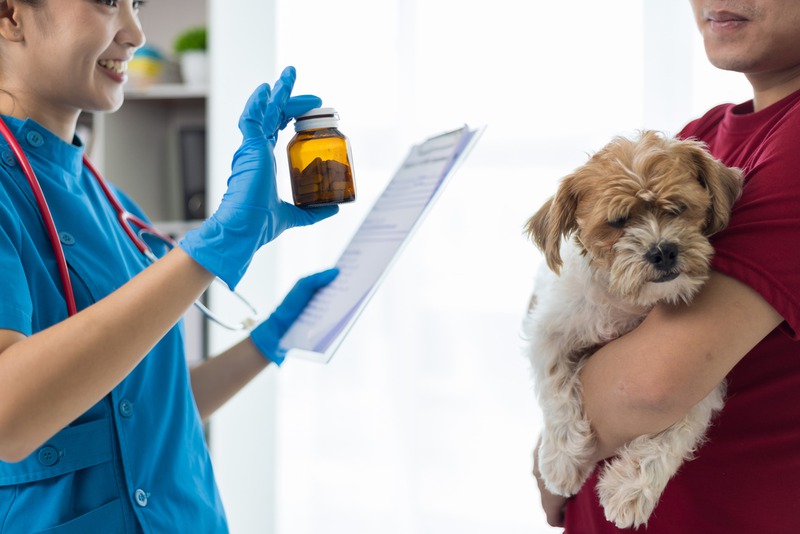As a pet owner, understanding your pet’s health needs is crucial for ensuring they live a long, happy, and healthy life. One key area of veterinary care is internal medicine, which focuses on diagnosing and treating diseases involving your pet’s internal organs. This article aims to help you recognize signs that your pet may require veterinary internal medicine services, providing peace of mind and actionable steps to take if something seems amiss.
Common Signs Your Pet May Require Internal Medicine Services
Knowing the signs that indicate your pet may need internal medicine services can be the first step toward effective treatment. Here are some symptoms to watch out for:
-
Unexplained weight loss: If your pet is losing weight without a clear reason, such as changes in diet or increased exercise, this could be a sign of an underlying health issue.
-
Lethargy and lack of energy: While all pets have lazy days, consistent lethargy or a noticeable decrease in activity levels can indicate problems.
-
Changes in appetite or drinking habits: Sudden increases or decreases in eating or drinking can be a red flag.
-
Abnormal bowel movements: Diarrhea, constipation, or unusual changes in urination should not be ignored.
-
Persistent coughing or difficulty breathing: These respiratory issues may signal more severe internal problems.
When to Consult a Veterinarian
Recognizing symptoms is only the first step; knowing when to seek professional help is crucial for your pet’s health. Consult your veterinarian if:
-
The symptoms persist for more than a few days.
-
Multiple symptoms appear simultaneously.
-
Your pet seems to be in pain, evidenced by whining, unusual aggression, or withdrawal behavior.
-
Basic care and home remedies do not seem to alleviate the symptoms.
Early intervention can significantly improve outcomes, so don’t hesitate to reach out to your veterinarian if you notice these signs.
Diagnostic Procedures
When you take your pet to the vet, several diagnostic tests can help pinpoint the issue. Understanding these procedures can reduce anxiety and prepare you for what to expect:
-
Blood tests can offer a wealth of information about your pet’s internal state, from organ function to the presence of infections.
-
X-rays: Used to visualize bones and some organs, X-rays can help identify fractures, tumors, or foreign objects.
-
Ultrasounds: These provide detailed images of internal organs, helping diagnose conditions like tumors, cysts, and organ abnormalities.
Understanding diagnostic results can sometimes require follow-up procedures. In such cases, you might want to learn more about pet surgery to understand better the next steps your veterinarian may recommend.
Treatment Options
Once a diagnosis is made, your veterinarian will discuss various treatment options with you. These may include:
-
Medications: Depending on the condition, your pet may need antibiotics, anti-inflammatories, or other medications.
-
Dietary changes: Special diets can help manage conditions like diabetes, kidney disease, and gastrointestinal issues.
-
Specialized therapies: These can include treatments like chemotherapy for cancer or physical therapy for mobility issues.
Emphasizing timely intervention can lead to better health outcomes. For example, if dental issues are part of the problem, incorporating evaluations from their pet dental services ensures that all aspects of your pet’s health are addressed comprehensively.
FAQs
To help you navigate the complexities of veterinary internal medicine, here are answers to some common questions:
-
How can I monitor symptoms at home? Keep a diary of your pet’s behavior, noting any changes in appetite, energy, bowel movements, and any new symptoms that arise.
-
What should I expect during a vet visit? Your vet will likely perform a physical exam, possibly followed by diagnostic tests like blood work, X-rays, or ultrasounds.
-
What are the costs associated with treatments? Costs can vary widely depending on the diagnosis and required treatments. Discuss financing options or insurance policies with your vet to manage expenses effectively.
Many pet owners might wonder why regular check-ups are essential. Routine visits often catch early signs of illness that fall under veterinary internal medicine, thus preventing more significant issues later.
Final Thoughts
Being proactive about your pet’s health is key. Notice how they act and look for unusual signs. If something is off, don’t wait—take your pet to the vet quickly. Early action can make treatments work better and keep your pet healthier. Always ask your vet for advice when you’re worried about your pet’s health. Acting fast can save your pet’s life and make sure they get the care they need. Spotting problems early means easier and more successful treatments for your furry friends. Keep a close eye on your pet’s health for their happiest, healthiest life.

